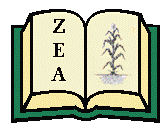Description
This is a textbook covering concepts in animal parasitology. It is meant to be used by students, teachers, professors, researchers, and members of the public who are interested in learning about animal parasite biology, systematics, taxonomy, zoogeography, and ecology. The primary intended audience is upper-level undergraduate or graduate university students who have knowledge of basic biology and, particularly, basic animal biology. (863 pages, illustrated)
One of the most fascinating things that a person can experience in the complex realm of biology is the discovery of an animal living inside another animal. If this discovery takes place at an early enough stage in the development of a young person’s view of the world, that is, before the rules and regulations of what of society thinks, and before what is good and what is bad are perfused into a learner’s mind, the first discovery of living-motile trematode worms living inside the lungs of a frog or of tapeworms inhabiting the gut of a rodent can be exhilarating and a positively unforgettable experience. The questions that arise when these kinds of animals are encountered for the first time are innumerable and, if answered carefully and perhaps fully, may lead to more and more questions, and hopefully, more and more answers.
Contents:
Preface
Part I: INTRODUCTORY CONCEPTS
1: Introduction to Animal Parasitology. 2: Phylogenetic Systematics in Parasitology. 3: Helminth Identification and Diagnostics: Basic Molecular Techniques. • Parasites in Relation to Other Organisms 4: Hosts, Reservoirs, and Vectors. 5: Life Cycles. 6: Behavioral Parasitology. • Parascript Approaches 7: Biostatistics for Parasitologists: A Painless Introduction. 8: Distributional Ecology of Parasites
Part II: PROTOZOA, MYXOZOA, MESOZOA
Apicomplexa — 9: The Coccidia Proper: Important Apicomplexa Other than Haemoprotozoa. 10: Haemosporida (Order): The “Malaria Parasites”
Trypanosomatidae — 11: Trypanosoma (Genus). 12: Leishmania (Genus) and Leishmaniasis.
Myxozoa — 13: Myxozoa (Subphylum).
Mesozoa — 14: Mesozoa (Phylum Dicyemida and Phylum Orthonecta).
Part III: ENDOPARASITIC PLATYHELMINTHS
Platyhelminthes — 15: Introduction to Endoparasitic Platyhelminths (Phylum Platyhelminthes).
Cestoda: 16: Introduction to Cestodes (Class Cestoda). • Eucestoda — 17: Introduction to Cyclophyllidea Beneden in Braun, 1900 (Order). 18: Taenia (Genus). 19: Echinococcus (Genus). 20: Proteocephalidae La Rue, 1911 (Family). 21: Bothriocephalidea Kuchta et al., 2008 (Order). 22: Diphyllobothriidea Kuchta et al., 2008 (Order): The Broad Tapeworms. 23: Trypanorhyncha Diesing, 1863 (Order). 24: Cathetocephalidea Schmidt and Beveridge, 1990 (Order). 25: Diphyllidea van Beneden in Carus, 1863 (Order). 26: Lecanicephalidea Hyman, 1951 (Order). 27: Litobothriidea Dailey, 1969 (Order). 28: Phyllobothriidea Caira et al., 2014 (Order). 29: Rhinebothriidea Healy et al., 2009 (Order). 30: Relics of “Tetraphyllidea” van Beneden, 1850 (Order). • Amphilinidea — 31: Amphilinidea Poche 1922 (Order). • Gyrocotylidea — 32: Gyrocotylidea (Order): The Most Primitive Group of Tapeworms.
Trematoda: • Aspidogastrea — 33: Aspidogastrea (Subclass). • Digenea, Diplostomida — 34: Introduction to Diplostomida Olson et al., 2003 (Order). 35: Aporocotylidae (Family): Fish Blood Flukes. • Digenea, Plagiorchiida — 36: Introduction to Plagiorchiida La Rue, 1957 (Order). 37: Bivesiculata Olson et al., 2003 (Suborder): Small, Rare, but Important. 38: Echinostomata La Rue, 1926 (Suborder). 39: Haplosplanchnata Olson et al., 2003 (Suborder): Two Hosts with Half the Guts. 40: Hemiurata Skrjabin & Guschanskaja, 1954 (Suborder). 41: Monorchiata Olson et al., 2003 (Suborder): Two Families Separated by Salinity. 42: Opisthorchis (Genus). • Xiphidiata — 43: Allocreadiidae Looss, 1902 (Family). 44: Haematoloechidae Odening, 1964 (Family). 45: Lecithodendriidae Lühe, 1901 (Family). 46: Opecoelidae Ozaki, 1925 (Family): The Richest Trematode Family. • Digenea — 47: Summary of the Digenea (Subclass): Insights and Lessons from a Prominent Parasitologist.
Part IV: NEMATA, NEMATOMORPHA, ACANTHOCEPHALA, PENTASTOMIDA
Nemata — 48: Introduction to Endoparasitic Nematodes (Phylum Nemata). 49: Trichuroidea and Trichinelloidea (Superfamilies). 50: Ascaridoidea (Superfamily): Large Intestinal Nematodes. 51: Heterakoidea (Superfamily): Cosmopolitan Gut-Dwelling Parasites of Tetrapods. 52: Oxyurida (Order): Pinworms. 53: Spirurida (Order). 54: Camallanina (Suborder): Guinea Worm and Related Nematodes. 55: Filarioidea (Superfamily). 56: Strongyloidea and Trichostrongyloidea (Superfamilies): Bursate Nematodes.
Nematomorpha — 57: Nematomorpha (Phylum): Horsehair Worms
Acanthocephala — 58: Acanthocephala (Phylum).
Pentastomida — 59: Pentastomida: Endoparasitic Arthopods.
Part V: ECTOPARASITES
Platyhelminthes — 60: Monogenea (Class). 61: Transversotremata (Suborder): Ectoparasitic Trematodes.
Hirudinia– 62: Hirudinia (Class): Parasitic Leeches
Arthropoda — 63: Siphonaptera (Order): Fleas. 64: Phthiraptera (Order): Lice. 65: Triatominae (Subfamily): Kissing Bugs. 66: Acari (Order): Ticks. 67: Acari (Order): Mites
ISBN
ISBN 978-1-60962-306-7
Publication Date
6-10-2024
Publisher
Zea Books
City
Lincoln, Nebraska
Keywords
Parasites, Biology, Textbook
Disciplines
Animal Sciences | Ecology and Evolutionary Biology | Immunology and Infectious Disease | Infectious Disease | Marine Biology | Parasitology | Public Health | Science and Mathematics Education | Tropical Medicine | Veterinary Infectious Diseases | Veterinary Medicine | Veterinary Pathology and Pathobiology
Recommended Citation
Gardner, S. L., and S. A. Gardner, eds. 2024. Concepts in Animal Parasitology. Zea Books, Lincoln, Nebraska, United States. doi:10.32873/unl.dc.ciap070

Included in
Animal Sciences Commons, Ecology and Evolutionary Biology Commons, Infectious Disease Commons, Marine Biology Commons, Parasitology Commons, Public Health Commons, Science and Mathematics Education Commons, Tropical Medicine Commons, Veterinary Infectious Diseases Commons, Veterinary Pathology and Pathobiology Commons


Comments
Copyright 2024, the authors and editors. Open access material
License: CC BY-NC-SA